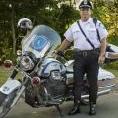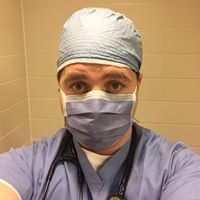Leaderboard
Popular Content
Showing content with the highest reputation on 03/13/2010 in all areas
-
If I recall correctly, those weren't restrain harnesses, but just apparatus to position the dummies within the mock-up. Nadine Levick's group is heavily against those tethered harnesses by the way. And heavily in favour of helmets in the back as a stop gap until Ambulances are designed to remove head strike hazard. There's a picture she has somewhere that illustrates this issue quite well for me. I'll see if I can find it but it essentially points out that we don't find it weird when flight crews wear their helmets, or construction crews theirs. Sure it'll seem odd at first, but any time you create a new normal, there will be a period of adjustment. Besides, it's about going home safe at shift change, not looking like Rabbit or that blond who doesn't know how to button her top. Now I'm not super keen on the idea of wearing a helmet in the back, but until we get trucks with a forward facing attendant seat with no head strike hazards, I'm willing to wear one. It's time to ditch the squad bench folks.1 point
-
HELMETS IN EMS....NO NO NO!!! I do agree with wearing an approved OSHA and/or NFPA helmet for fire scenes, MVA Extrications (if in the car), or special rescue situations but to wear a helmet in the ambulance when driving and/or doing patient care...ahhhhhh no. The helmet idea is somewhat of a good thought but come on folks really...think about it. If you properly secure your gear (monitor/O2 bottle etc...) and wear a seatbelt your safety will be as best as can be according the the US Ambulance KKK specs (organization for ambulance safety/design). Most injuries to ambulance attendants come from improper storage of EMS equipment when transporting. Get into the habit of using the captain chair seatbelt to secure your monitor, use the bench seat seat belts to secure the airway bag with bottle in it. I think before helmet are a thought we need to educate ourselves as we educate others to wear seatbelts....most injuried MOS (members of service) are found to be unbelted. Injuries mostly from loose gear....accidents happen and you never know when you'll be in one to wear a helmet can actually increase injury if it in NOT properly sized, maintained, and worn properly. I think the KKK specs need to add more padding to walls, more catch nets at the end of the bench seat, and require seat belt harnesses in the back. Then they really need to look into the construction....um I never could figure out why they use pressboard with laminent over it then screw a 1/4 inch wood screw into it to hold a crappy nylon strap with cheap plastic buckles. These straps should be more of a reinforced connection to the car with seat belt type buckles. Then there is the stretcher mount ummmmm.... 1950's technology for 90% of the ambulances on the road today. A trip hazard "Y" on the floor, I stupid hook at the rear of the doors to trip on because the yellow paint wore off and another crappy single pole with a stupid ball pin to lock the stretcher to the wall. The spec should be looked into and require atleast the center track system that can actually support the stretcher to maintain its position on the floor with patient on it should the ambulance roll over. SO.....IN CLOSING There are many more things that need to be corrected in ambulance to make it safer and by requiring helmets just is a false sense of security to the worker and a lame excuse for ambulance builders to skirt around safety issues that really need to be looked into. Again just my opinion!! Oh and where in England do they require helmets to be worn???? I have Friends and Family that work EMS in London...they don't wear them there as a requirment!1 point
-
Eydawn, I recognised a couple of individuals there. CTV news ran the footage of the crash and the efforts afterwards. That wasn't the first crash of that type at that corner. Just the most violent. When I worked there last year a couple of skeleton pilots also wiped out there. If you saw the CTV news footage, there is one wearing a red vest near the beginning of the rescue who was facing the camera and grabbing something. His name is Chrs. At the end as they are showing the back of the amulance, there is a man with his head down beside the back door, on the passenger side. He is a sports doc from Toronto, and an African American truned around to walk away from the ambulance. He is Emmanuelle from the U.S. Coast Guard stationed in Galveston Texas. As far as not being permitted to conduct any ALS there, it is because the union refused to allow BCAS to permit us to do it. They claimed they could not verify the quality of training each medic has, so we were relegated to a BLS and extrication role. BCAS ambulances were on scene and there are several docs also scheduled to work there. I did notice that the patient was intubated though, so I suspect a full ACLS code was conducted using the personnel there. Personally, I didn't mind not being permitted to use my ALS scope while I was there. By the time we had anyone removed from the track we were surrounded by docs anyways...and not just your run of the mill GP, but sports specialists and trauma specialists. Two of them work or have worked for CFL teams. I can think of one of two things that likely happened to cause his death. Either a C1/C2 fracture and cord transection or an aortic rupture. I just feel for most of the guys working there. The medical staff may be accustomed to dealing with death, but there is full time staff who work there as well who have likely seen nothing more than burns or minor trauma and I know some have never dealt with a situation like this one.1 point
-
So in the interest of keeping the conversation going....with the pt's Hx, age, and cardiac findings (occasional PVC's to increasing PVC's to trigeminy) is not chest pain/discomfort, and sudden SOB not a significant finding that could be either a result of the pain and SOB or a cause? And maybe im mistaken but isnt the progression of the ventricular ectopy a change on the EKG including the 12 lead? In general, I was not very worried about the pt. She was in some amount of distress but I (eventually) did not feel that she needed immediate treatment. With that said, I like the way someone else put it....Could I have prevented something that potentially happened or could have happened an hour after I dropped her off? PS. ... Im begining to detect some tension in this post.....CHILLLLLLL, maybe we should get a 12 year old to post and solve this issue.1 point
-
Most of what you copied and pasted is incorrect. But as we all know, you've never worked in either province and don't have this "information" first hand, from someone (like myself) who actually works in Alberta I'm not entirely sure if you read this information before you posted either ... Please feel free to take a few minutes to review the sillyness of some of what you posted. Heck, try and reverse the little 'reciprocity calculator' and go BC to Alberta. All of those 'additional competencies' that you posted are things that we in Alberta are trained to do through the EMT course itself, or the supplemental courses provided with the EMT course such as NAPD or EVOC, to name a couple. For those looking for information regarding scope of practice and working in a particular area, you should consult someone from that area. "Consult the provincial regulators for final decisions regarding practice." Please do, as there are several errors in this 'calculator'.0 points
-
0 points
-
Sure, we'll make helmets legal too for everyone in their cars. As for your idea on CPR ... I guess you've never had someone you've gotten ROSC on who yet again coded after transport was initiated. Are you going to stop the ambulance in the middle of nowhere to bang on some guy's chest for a while? Perhaps it's lack of resources, because I can't see you being serious ... And as for this thread, seems to be a revival of something from February 2006 ...0 points
-
Regarding CPR, I firmly believe then unless you get a ROSC you shouldn't be transporting a VSA, unless there are exceptional circumstances.0 points
-
0 points
-
If you notice the crash test dummies have full movable safety harnesses yet did you see the head in a low speed crash smack the cabinet. It honestly is not a bad ideal to have them on for those in the patient compartment. As to CPR you should not be in motion while CPR is in progress so should not be a problem.-1 points
-
Yes, I am refering to wear a helmemt in the back of an ambulance during transports. There are 500,000 + ambulances in the US. Approximatly 9000 MVC involving ambulancesa year.10 serious injures a day involving ambulance MVC's and ONE FATAL INJURY EACH WEEK IN VOLVING AMBULANCE MVC. Yes designg a safer ambulance is a start in the right direction. But the number 1 cause of those fatilites were blunt force head trauma. So this issue of safety in ambulances is going to have to be a mutli teir effort. Do you realize there is more regulations involving the transportation of cattle than there is transporting of patients. My god in 2009 there were 9 fatal ems heliocopter crashes. In whiich the NTSB convien hearings, the FAA held hearings. ANd there were US senate hearing are what can be done to reduce the amount of helio crashes. But in that same year there were 52 falities involving ambulance MVC and there was nothing done.-1 points





